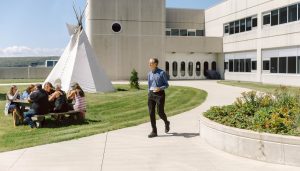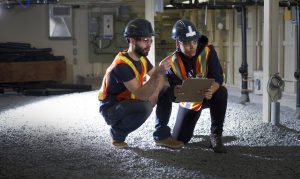Service Learning Procedures
Service Learning procedures have been separated into three sections:
- Preparing for Service Learning
- During the Service Learning
- Following the Service Learning
Each section outlines the procedures that should take place during each period.
Preparing for Service Learning
Identifying a Campus, College, or Community Partner

NSCC establishes connections with community partners through various avenues. On occasions, Community Partners approach NSCC with specific needs that align with the program objectives. Alternatively, NSCC actively finds potential partners within the community whose needs match program goals. In both scenarios, the essence of “service” in Service Learning originates from campus, college, or a student.
Faculty members are encouraged to engage community partners in conversations aimed at clarifying their requirements. When feasible, inviting partners to address the class directly can enhance understanding and collaboration. This open dialogue facilitates the seamless integration of community needs into the Service Learning framework.
Consider the following questions when developing a Service Learning project:
- Does the project align with program or course-level outcomes?
- Does the community partner possess a minimum of $2 million in General Liability Insurance Coverage?
- Are the benefits shared equally between learning and service?
- Are we confident that the service being provided by students does not take away employment from local contractors or compete with local businesses or organizations?
- Is the project location appropriate?
- Have we devised an authentic assessment and learning evaluation strategy ?
- Is there a budget for expenses such as materials, tools etc.?
- Does the project encourage cross-program or cross-school collaboration?
- Have all participating Faculty and students participated in the planning process?
Orientations to Service Learning
It is important that Community Partners understand the difference between Service Learning, volunteering, and other forms of work-integrated learning. Providing an orientation for Community Partners is an important step in developing and designing successful learning projects. Service Learning should always strive to create a balance between benefits to students and benefits to the community organization.
Faculty are expected to provide students with an orientation to Service Learning. An important part of this session should be to define Service Learning as a teaching and learning method. Service Learning should provide students with a sense of what the “product” or “service” of their work will be. Service can include a number of activities, but what is important is that the students are doing something that is within their scope of practice, skills, competencies and knowledge base.
The development of a learning plan is an important way to engage students in identifying their own learning goals in addition to program and course outcomes. Faculty design the components of the learning plan that they would like students to prepare. Some suggestions include: task lists; orientation; literature review; meetings; project updates; presentations; budget and costs; outcomes; evaluations; distributions and finding; and risk.
Student & Graduate Employment Site
Utilize NSCC’s job board as an effective platform to promote service learning opportunities. Organizations can list these roles on NSCC’s Student & Graduate Employment Site, categorizing them under “Job Type: Service Learning.”

During the Service Learning
Once the project is underway, there are several ways that students can be supported in in carrying out their Service Learning plan:
- Supervise, support, and monitor the student(s)
- Encourage regular reflections, blogging, email, social media posts, or through MS Teams
- Check-in either virtually, on campus, or in the community
- Use community partner as co-educator in/outside classroom
Although a plan for assessment and evaluation was developed at the beginning of the project, now is the time to implement those tools and provide opportunities for meaningful reflection. This is the part of the Service Learning experience where students make important portfolio connections between what they have done and seen with who they are as potential employees, citizens, team members and students.
Faculty support their students to:
- Develop critical thinking process, analyze concepts. Faculty might need to provide theory on critical thinking or practice in class.
- Connect experience to theory – invite students to share their learning during class discussions.
Faculty can assist this experience by:
- Posing reflective questions, asking students to explore systemic causes of problems they have seen during their project (i.e., poverty, poor policies, lack of funding).
- Giving students opportunities to putting facts, ideas, experiences together to derive new meaning and understanding (learning circles, group meetings, de-briefings).
These activities contribute to Portfolio Learning:
- Guide the students towards articulation of who they were before the service, and who they have become as a result of the experience. How has it changed them, or not?
- What strengths and challenges have they identified about themselves? Can they turn this into a professional and/or personal development plan for themselves?
Orientation & Job Safety Review
Community partners are required to provide students with an orientation and safety review on the first day the student is onsite. The orientation will assist students with establishing clear objectives, duties, and responsibilities for their service learning, allow them to get acquainted with the worksite (either onsite or remotely), and understand the organization itself. The job safety review is when students will learn about occupational health and safety policies, layout of the worksite, job hazards, etc. to ensure they are aware of safe work practices.
Confidentiality
Confidentiality is of upmost importance in maintaining privacy, security, and trust in professional and personal interactions. Students are obliged to maintain confidentiality regarding all information about clients, policies, and work materials they may encounter during their experience. However, sharing general information relevant to the student’s educational experience with faculty may be necessary.
Release of Information
During the service learning the faculty and the community partner will need to communicate regarding the student’s performance. In accordance with the Freedom of Information and Protection of Privacy Act (FOIPOP) and the Personal Information Protection and Electronic Documents Act (PIPEDA), students may be required to have communications and certain information released to the community partner in order to obtain credit.
Accident/Incident Reporting Process
Prior to a student starting the service learning, it is important to ensure that they know what to do and who to contact if they find themselves in an unsafe or disrespectful working environment. See the Health & Safety section of this guide more for detail.
Following the Service Learning
This is the part of the Service Learning experience where students reflect and make important portfolio connections between what they have done and seen with who they are as potential employees, citizens, team members and students.

Evaluate the Learning
Faculty are responsible for formally assess the learning. Self-assessment can contribute, so can input from the community partner, but it is the faculty role to assign a value to this. One important guideline is to evaluate the learning not the service. Sometimes service goals are not met, for any number of reasons. That doesn’t mean that the student has not met the learning outcome or had a significant learning experience. Keep this in mind when formally evaluating the project.
- Can the student effectively explain how they’ve fulfilled the course learning outcomes?
- Can the student articulate the impact of the learning on their own views, values, skills, future actions?
- Can the student define what worked and what did not about their approach to service?
Evaluate the Partnership
Now is the time for evaluating not only the learning, but the partnership. It is important to ask the community partner about the experience from their perspective.
- Were their service needs and goals met?
- Was their role suitable?
- Did the students and faculty fulfill their obligations?
- Did the community partner feel like they were partners in learning?
- Was the communication strategy effective?
- Would the community partner participate in service learning again (same project or different)?
Celebrate the Project
There are many ways to celebrate or wrap up a Service Learning project:
- Share details with Career and Employment Services (workexperince@nscc.ca)
- Community presentations of students’ work
- Invite Service Learning partners to the campus for presentations
- Host a reception to recognize partners and students
- Share stories of success with the media, other campus colleagues with NSCC’s Marketing and Communications Team’s support
- Share stories of success on Connect
- Have students develop and present a learning narrative that summarizes the project
- Ensure students send follow-up letter to community partner


